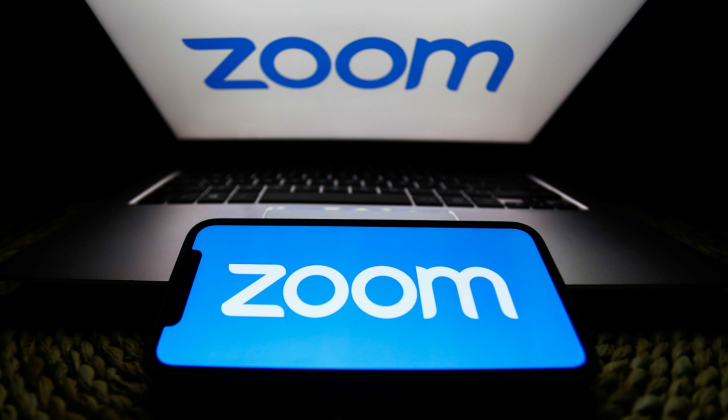
He is reported to have stood up during an all-hands employee meeting and announced that employees who live within 50 miles of a Zoom office will have to work in the nearest office at least two days a week.
Fair enough, you might think, just another CEO driving his company towards a post-pandemic hybrid working environment. Except that Zoom’s video conferencing platform rapidly established Category leadership, and the company minted money from championing remote working during the Covid-19 pandemic. Zoom quickly became a generic for video conferencing, eclipsing the likes of GoToMeeting, Skype and WebEx.
Startlingly, Yuan was reported also to have claimed, according to ZDNet, that Zoom meetings don’t let people build trust or be innovative and that the problem could be fixed by returning to an `engagement hub`. That’s an office to you or I.
Just let that sink in for a moment. A CEO essentially claiming there is a major problem with the premise on which his formerly Category-leading company was built and that his product has failed to deliver on key customer requirements.
I can only imagine the intake of breath from those `Zoomies` assembled. In a connected world you cannot show such apparent hypocrisy of existential proportions to your staff and expect it not to leak. And it did.
Why on earth did he do it? He may have thought such statements might be considered a bold sign of corporate maturity or a Wall Street pleasing move. But given the fundamental nature of Zoom’s business, in our opinion, he demonstrated a lack of joined-up thinking at best and at worst delivered a spectacular, tone-deaf, Category own goal.
In one fail swoop he blew Zoom’s Category Authenticity.
How can you maintain Category Authenticity, when like Zoom, customer demand predicted in your POV is moving away from you and, at least in part, doing things differently is not delivering the intended advantage?
The reality is that a PoV may need to evolve along with the Category Blueprint. But that as a core corporate strategy it should be debated and agreed by the board and each CXO is clear about their responsibilities for its execution, before any public statements are made. Sometimes, as an external environment changes, you can buy time by recommending alternatives.
As physical, mental and financial well-being became issues, Big Tobacco suggested substitutes like gum and, controversially, moving into `less harmful` products like vaping and cannabis. Confectionary companies recommend consuming their products as treats and reduced the sugar content of their sweets.
Alcohol companies now suggest drinking responsibly and created 0% alcohol alternatives. Gaming companies urge restraint through advertising, fund recovery initiatives for gambling addicts and diversify into other ‘leisure` activities
But Zoom’s business was not harmful. On the contrary, it introduced an easy-to-access and use service, delivering a previously impossible level of flexibility into people’s working lives.
Early on, Zoom had a district Category advantage, it brought real benefits to its customers, many of which only became apparent when customers started to engage. With perfect timing, it provided a platform that brought people together in adversity, allowing business and administration to continue functioning in the exceptional circumstances of Covid-19..
The harm was self-inflicted. The impact of these statements could not have come at a worse moment.
Zoom was not pressing home its early Category advantage. It made a play, rightly from a Category leadership perspective, that it would create an ecosystem of apps, like Chrome extensions. But it did not make them stick.
Zoom’s problems have been compounded by rivals like Microsoft and Google integrating video conferencing apps within ubiquitous desktop productivity platforms. This has essentially replicated its original Category POV and, at the same time, relegated Zoom’s Category leadership to that of a productivity suite ingredient already bundled by Big Tech players.
So, from our point of view the timing, delivery and the messaging here sucks. But the financial markets appeared to like the tactic and Yuan must have been pleased when Zoom’s stock value climbed for ten days.
But, perhaps once the true implications of Yuan’s statement were absorbed, a two month decline to a 52-week low followed. Indicating that short-term financial market pleasing tactics aren’t reliable in delivering long term value.
What might Zoom have done?
It SHOULD already have been pressing home its original Category advantage. It COULD have recognised the fundamental lack of Category authenticity in its announcement. It COULD, then, have moved its Category strategy forward, striking by making a virtue out of Zoom being the best for the new and complex world of hybrid work. This WOULD have forced its competitors to respond, thus validating its evolved Category position.
The major lesson here is to review regularly and evolve your PoV. Keep it up-to-date in line with economic reality, stay ahead by continuing to Strike to ensure you don’t throw away your Category advantage.
Find more discussion on Zoom’s predicament and many other contentious Category issues on The Difference Engine podcast at https://link.chtbl.com/thedifferenceengine